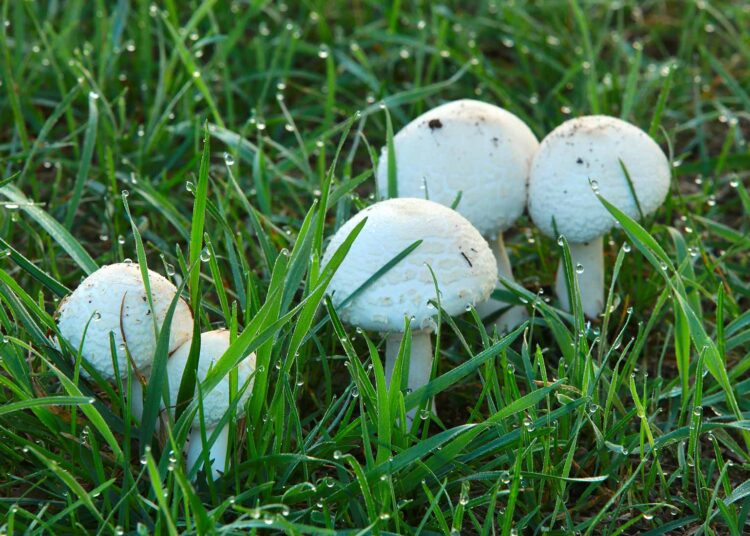Mushrooms frequently appear in lawns, often sparking curiosity among gardeners and homeowners. While some are harmless, others can be dangerous to pets, children, or your plants. Identifying these mushrooms correctly is essential to ensure safety and maintain the health of your lawn. This guide will help you identify common lawn mushrooms, how to recognize their features, and how to deal with them safely.
Understanding Lawn Mushrooms
Mushrooms are the fruiting bodies of fungi that play an essential role in breaking down organic material and enriching the soil. They thrive in moist, shaded areas, often after rainfall. While mushrooms are fascinating to observe, some species can be harmful, which makes it important to recognize them accurately.
Common Lawn Mushrooms and Their Identification
- Shaggy Ink Cap (Coprinus comatus)
Shaggy Ink Cap mushrooms are easily identifiable by their white, shaggy caps that turn black and liquefy as they age. These mushrooms are typically found in clusters in lawns with organic-rich soil. While edible when young, they become toxic as they mature. If you’re identifying them, look for the distinctive shaggy, white cap and black ink-like substance as they age. - Honey Fungus (Armillaria mellea)
Honey Fungus mushrooms have yellow-brown caps with white gills, and they often appear in clusters. These mushrooms are typically found at the base of trees and shrubs. They are toxic and should not be eaten. Honey Fungus can be identified by the honey-colored cap and its tendency to grow around tree bases. - Green Gill (Chlorophyllum molybdites)
Green Gill mushrooms are large, white mushrooms with greenish gills. They are commonly found in lawns and grassy areas, and they are highly toxic. Consumption of these mushrooms can cause severe illness. The greenish gills and large, white cap are key identifying features of this mushroom. - Field Mushroom (Agaricus campestris)
Field Mushrooms have a smooth, white cap that turns from pink to brown as it matures. These mushrooms are commonly found in grassy fields and lawns. Field Mushrooms are edible and resemble the store-bought button mushrooms. To identify them, look for a smooth, white cap and gills that change from pink to brown as they age. - Fairy Ring Mushroom (Marasmius oreades)
Fairy Ring Mushrooms are small, tan to brown mushrooms that grow in a distinctive circular pattern. These mushrooms typically form rings in well-maintained lawns. They are edible and often used in cooking. The ring-shaped growth pattern makes these mushrooms easily identifiable.
How to Identify Lawn Mushrooms
When identifying mushrooms, pay attention to several key features:
- Cap Shape: Observe the shape, texture, and size of the cap.
- Color and Size: Note the color and any changes that occur as the mushroom matures.
- Gills: Examine the color of the gills and their attachment to the stem.
- Stem Features: Look for any unique characteristics such as texture and color.
- Spore Print: To collect a spore print, place the mushroom cap gills down on a piece of paper overnight. The color of the spores can be an important clue for identification.
Consult multiple sources or experts for confirmation if you are unsure about a mushroom’s identity.
Safety Precautions
Many mushrooms are toxic, and misidentifying them can lead to serious health risks. To ensure safety, avoid touching mushrooms with bare hands and keep pets and children away from them. If you’re unsure about a mushroom’s identity, it’s best to contact a local expert or mycologist for advice. If you suspect that a mushroom is harmful to your lawn or plants, remove it carefully to avoid further spread.
Conclusion
While mushrooms can add beauty and intrigue to your lawn, it’s important to be able to identify them correctly to ensure safety and the health of your plants. By understanding key characteristics of common lawn mushrooms and recognizing potential risks, you can safely enjoy the diversity that mushrooms bring to your garden. Always exercise caution and consult experts if you’re unsure about any mushrooms in your lawn.
For more gardening tips and expert advice, visit our GardenLoom website.










